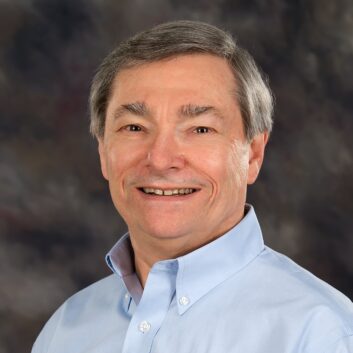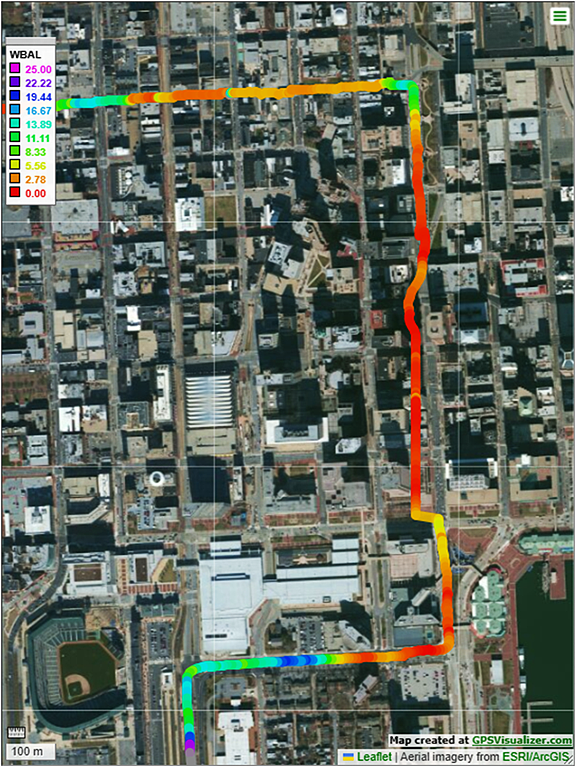
Radio World
Author (when available): James E. O’Neal
Noise problems in the AM broadcast band are nothing new; several initiatives to alleviate the situation were underway 100 years ago, not long after the “birth” of broadcasting.
However, here in the 21st century, the situation has only gotten worse, with the RF din from light dimmers, cellphone battery chargers and other consumer devices — compliant with FCC Part 15 in name only — making AM reception in the average home impossible.
A saving grace of sorts for AM service, though, is that nowadays, most radio listening is done in the car, not in the living or bedroom, as was the norm decades ago.
Mindful of this, John Kean, senior engineer at Cavell, Mertz & Associates (part of Capitol Airspace Group), undertook a field study of AM reception, with detailed signal-to-noise records involving mobile reception of three 50 kW AM stations in the Baltimore and Washington markets.

The study, undertaken with the support of the NRSC’s AM Improvement Working Group, was released recently with the title “NRSC-R102 Measurement of AM Band RF Noise Levels and Station Signal Attenuation.”
Kean will provide information on the study and assessment of AM reception in a Monday afternoon session of the Broadcast Engineering and IT Conference titled “Real AM Radio Coverage Across Urban to Rural Areas: A Novel RF Measurement Approach.”
Unexpected finding
In a pre-convention interview, Kean explained what was behind his investigatory work.
“To clarify the impact of radio frequency noise on AM radio reception, I conducted a study, with the approval of the NRSC’s AM Improvement Working Group, or AIWG. The working group had previously discussed RF noise, a known factor in degraded AM reception, particularly along roadways — a key location for AM listening. The study aimed to quantify that environmental noise.”
(Read the “NRSC-R102 Measurement of AM Band RF Noise Levels and Station Signal Attenuation” report.)
Kean observed that in addition to man-made noise sources outside the automobile, a car’s electrical system and associated “unintentional radiators” can also degrade mobile AM reception, but this was not part of the study.
“This study focused on environmental RF noise from sources largely outside our control, such as nearby power lines, traffic signals, roadside electrical equipment and electronic/electrical equipment in buildings.
“My work on this project began with discussions with the AIWG in early 2023,” said Kean. “During the course of several meetings, I presented the technical details of my proposed approach and shared results from preliminary drive tests conducted in Arlington, Va. These initial findings were promising, and I presented them at the meeting of the NRSC’s AM & FM Analog Broadcasting Subcommittee in the fall of 2023.” The field work itself began in October of that year.
Kean then developed a comprehensive methodology for the study, identifying representative AM radio stations, travel routes and equipment. As part of this pre-travel preparation he made an interesting discovery.
“Our measurements utilized an E-field (electric field) antenna, the type used in all vehicles, whereas groundwave studies typically employ H-field (magnetic field) antennas. This difference in antenna type may influence signal attenuation, particularly over longer distances,” he said.
“Although our antenna and receiver systems were calibrated in an open area, the study data suggests that the two field types may not correlate as closely as previously assumed.”
His investigative efforts also produced another unexpected finding while driving the test vehicle through densely populated downtown Baltimore: Despite all of the high-rise buildings and congestion, acceptably low AM noise levels were observed in most areas of the city.
[Related: “NRSC Studies RF Noise on Various Roadway Types”]
“The noise remained very low — less than a tenth of a millivolt per meter, RMS,” said Kean. “There was one peak while driving under one of the routes of the Baltimore electric streetcar system.”
He also observed huge variations in the field strength of one of the AM signals being monitored, Baltimore’s WBAL, which operates on 1090 kHz with 50 kW.
“The WBAL signal reached 100 microvolts per meter on an elevated area of roadway in west Baltimore, but fell to less than 1 millivolt per meter in downtown. However, the RF noise remained surprisingly low, with the peak being near an electric streetcar terminal at the city’s Camden Yards stadium.”

Kean said his testing also disclosed groundwave field strength variations that were not in accord with predictions based on published (M3) ground conductivity data.
“While some of this variation may be due to local changes in ground conductivity not reflected in the M3 data, it’s largely due to substantial signal attenuation by buildings,” he said.
Kean offered this conclusion, after fully evaluating his data: “AM radio is still capable of delivering very satisfying sound, and most noise can be almost eliminated with built-in software in modern car radios. Our study found that along roadways — where most AM listening occurs — RF noise remains moderately low, allowing for good reception. However, in urban areas, AM signals do suffer significant loss related to building density, a problem never reflected in station coverage maps. This can disproportionately impact listeners in densely populated areas.”
Kean’s session is on Monday afternoon of the Broadcast Engineering and IT Conference and is titled “Real AM Radio Coverage Across Urban to Rural Areas: A Novel RF Measurement Approach.” He will describe the methodology and his findings, along with possible solutions for AM broadcasters in addressing problematic reception in urban areas.
[For More News on the NAB Show See Our NAB Show News Page]
The post BEIT Session to Offer Insight on AM Viability appeared first on Radio World.
(Some articles are truncated by the original site.)
Please visit the Original Source


